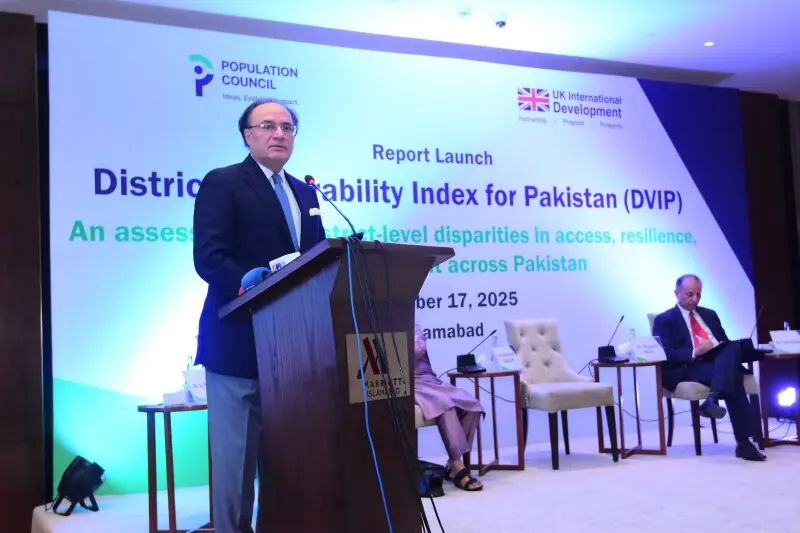Federal Minister for Finance, Senator Muhammad Aurangzeb, has underscored that Pakistan’s long-term economic prospects depend on effectively confronting the dual national challenges of rapid population growth and climate vulnerability.
He made this observation during his address to the launch ceremony of the District Vulnerability Index for Pakistan (DVIP), organised by the Population Council in Islamabad on Monday.
The minister noted that while the country continues its trajectory toward macroeconomic stabilisation and growth, Pakistan cannot realise its full potential without addressing the pressures created by population momentum and escalating climate risks.
“A 2.5% population growth is not sustainable,” he said.
He highlighted that the impacts of high population growth are reflected in persistent human development challenges, including child stunting, learning poverty, and a workforce insufficiently equipped for the future.
At the same time, climate change continues to expose communities to extreme temperatures, floods, droughts, and environmental degradation, with the most severe effects falling on districts already struggling with poverty, weak infrastructure, and limited access to essential services.
The finance minister affirmed the ministry’s commitment to supporting national efforts in population and climate-related policymaking by integrating these priorities into budgeting and resource allocation.
He underscored the increasing role of finance ministries globally in mainstreaming climate and demographic considerations, reinforcing that Pakistan must adopt the same approach to ensure long-term resilience and equitable development.
Aurangzeb commended the Population Council for producing a comprehensive, data-driven District Vulnerability Index based on three years of research.
He emphasised that the Index provides actionable management information through its detailed analysis across six domains, offering meaningful insights into geographic disparities and identifying districts most at risk, particularly in Balochistan and Khyber Pakhtunkhwa.
The findings reflect how social vulnerabilities and climate exposure reinforce each other, creating compounded risks for already marginalised populations.
He also drew attention to the growing trend of rural-to-urban migration and the expansion of informal settlements, where inadequate water, sanitation, and hygiene conditions contribute to poor nutrition outcomes and perpetuate child stunting.
He encouraged further research on urban vulnerabilities so that national planning can address the full spectrum of demographic and climate-linked challenges.
Population growth, climate change: Aurangzeb identifies ‘critical’ existential challenges facing Pakistan
Aurangzeb highlighted the need to recognise the interdependence between population dynamics and climate impacts and called for the integration of vulnerability metrics into future frameworks for resource allocation. He stressed that incorporating these insights into national planning will be critical for ensuring equity, strengthening resilience, and directing support to the districts that need it most.
He expressed confidence that the District Vulnerability Index will serve as an important tool for guiding future national strategies.


